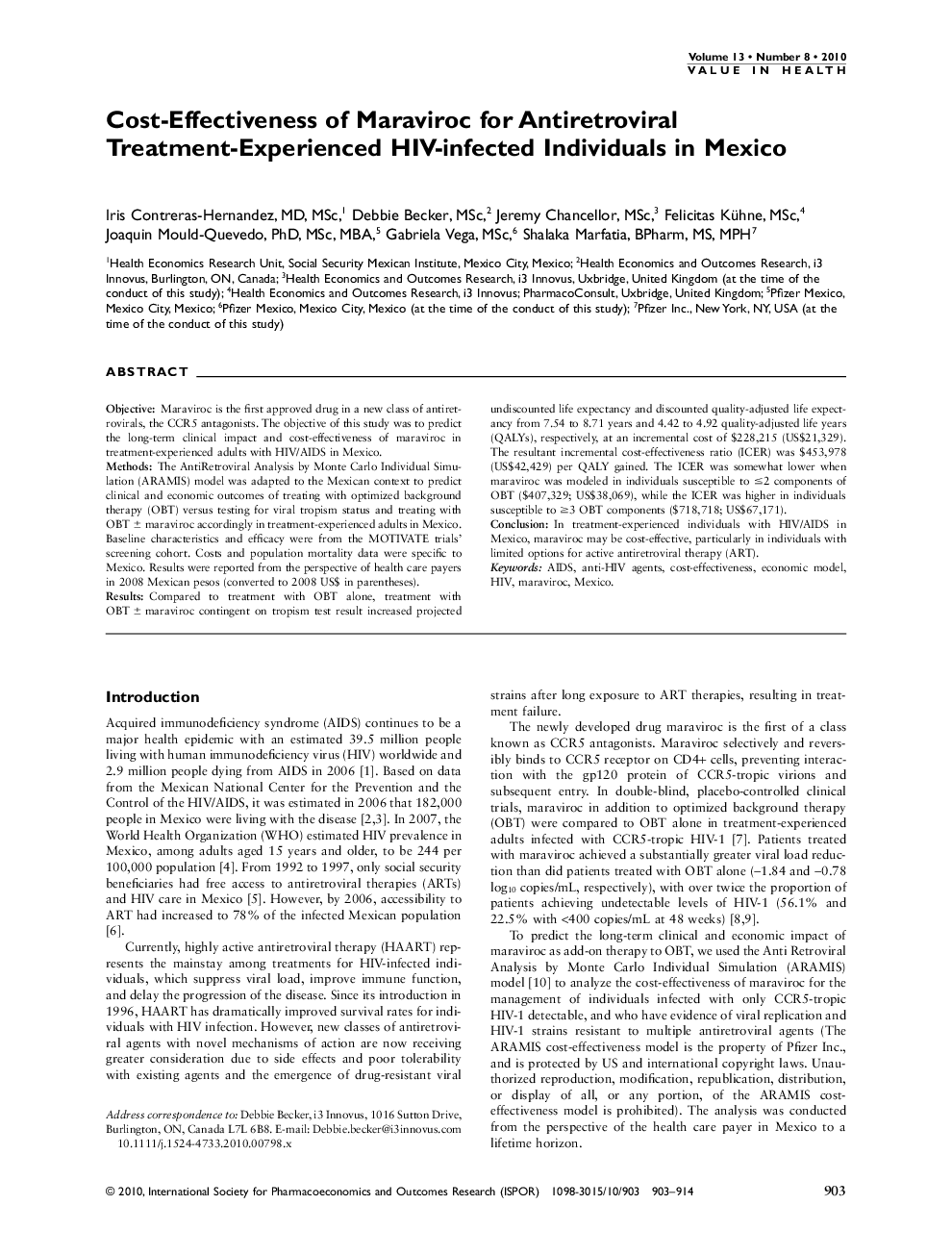| Article ID | Journal | Published Year | Pages | File Type |
|---|---|---|---|---|
| 988799 | Value in Health | 2010 | 12 Pages |
ObjectiveMaraviroc is the first approved drug in a new class of antiretrovirals, the CCR5 antagonists. The objective of this study was to predict the long-term clinical impact and cost-effectiveness of maraviroc in treatment-experienced adults with HIV/AIDS in Mexico.MethodsThe AntiRetroviral Analysis by Monte Carlo Individual Simulation (ARAMIS) model was adapted to the Mexican context to predict clinical and economic outcomes of treating with optimized background therapy (OBT) versus testing for viral tropism status and treating with OBT ± maraviroc accordingly in treatment-experienced adults in Mexico. Baseline characteristics and efficacy were from the MOTIVATE trials' screening cohort. Costs and population mortality data were specific to Mexico. Results were reported from the perspective of health care payers in 2008 Mexican pesos (converted to 2008 US$ in parentheses).ResultsCompared to treatment with OBT alone, treatment with OBT ± maraviroc contingent on tropism test result increased projected undiscounted life expectancy and discounted quality-adjusted life expectancy from 7.54 to 8.71 years and 4.42 to 4.92 quality-adjusted life years (QALYs), respectively, at an incremental cost of $228,215 (US$21,329). The resultant incremental cost-effectiveness ratio (ICER) was $453,978 (US$42,429) per QALY gained. The ICER was somewhat lower when maraviroc was modeled in individuals susceptible to ≤2 components of OBT ($407,329; US$38,069), while the ICER was higher in individuals susceptible to ≥3 OBT components ($718,718; US$67,171).ConclusionIn treatment-experienced individuals with HIV/AIDS in Mexico, maraviroc may be cost-effective, particularly in individuals with limited options for active antiretroviral therapy (ART).
